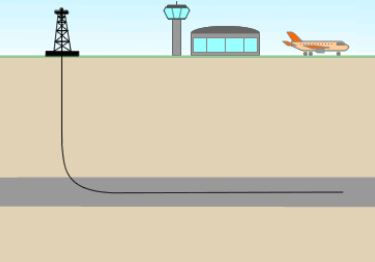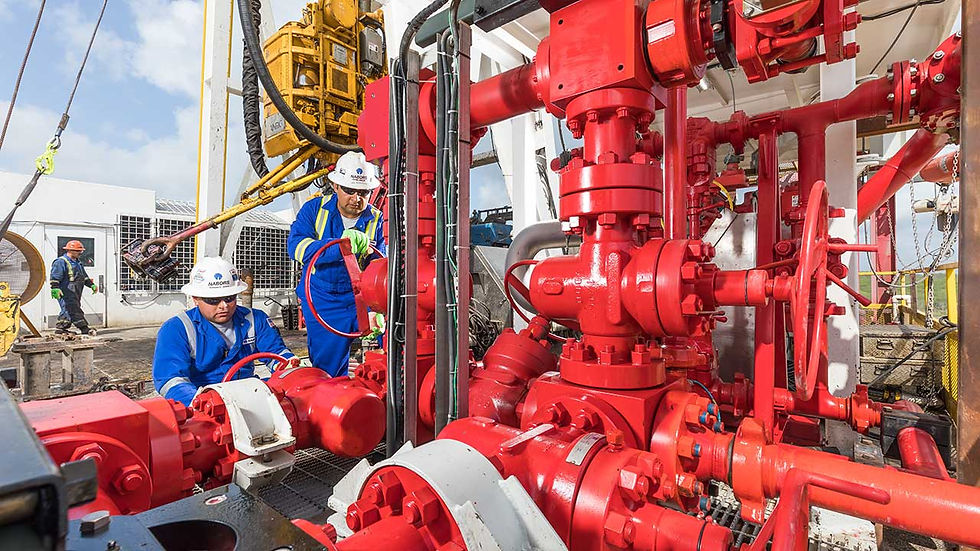What are Top Drive systems in drilling?
- Christina Queeni
- Dec 17, 2024
- 3 min read
A Top Drive System is a piece of equipment in modern drilling operations, replacing the traditional rotary table and kelly drive system. It is mounted on the derrick or mast of a drilling rig and provides the rotational force needed to turn the drill string and drill bit. Top drive systems have revolutionized the drilling process by improving efficiency, safety, and operational flexibility, especially in deep and directional wells.
This blog will cover the definition, types, applications, and advantages of top drive systems, with other essential details. 1. What is a Top Drive System?

A Top Drive is a mechanical device that hangs from the derrick or mast and rotates the drill string directly from the top. Unlike rotary tables, which rotate the drill string from the bottom, top drives apply torque directly to the upper section of the drill pipe, making drilling faster and more efficient.
It consists of:
A motor (electric or hydraulic) to provide torque.
A quill to connect the motor to the drill string.
A guide rail system to ensure smooth vertical movement.
The top drive is suspended by a traveling block, allowing it to move up and down while drilling or tripping pipe.
2. Types of Top Drive Systems

Top drive systems are broadly categorized into two types based on their power source:
a. Electric Top Drives
Powered by electric motors.
Known for their precision and ease of control.
Often used in onshore drilling rigs.
Require a reliable power source and advanced control systems.
b. Hydraulic Top Drives
Powered by hydraulic systems.
Known for their high torque capabilities.
Commonly used in offshore and heavy-duty drilling operations.
More durable in extreme drilling environments.
Each type has its advantages depending on the rig’s power capabilities, environment, and specific operational requirements.
3. Applications of Top Drive Systems
Top drive systems are widely used in the oil and gas industry, especially for:
a. Vertical Drilling

Top drives enhance efficiency in drilling straight wells by enabling continuous rotation of the drill string during operations.
b. Directional and Horizontal Drilling

Top drives allow precise control of the drill string, making it easier to steer the wellbore in a desired direction, including horizontal and extended-reach wells.
c. Deep Well Drilling

For deep drilling operations, top drives reduce the time spent on connections and ensure consistent torque throughout the operation.
d. Managed Pressure Drilling (MPD)

Top drives provide the flexibility required for MPD operations by maintaining constant rotation and managing pressure effectively.
4. Advantages of Top Drive Systems
Top drives offer several benefits over traditional rotary systems, including:
a. Increased Drilling Efficiency
Top drives allow drilling of longer stands of pipe (usually 90 feet or more) in a single operation, reducing connection time.
Continuous rotation helps prevent stuck pipe incidents, which are common in traditional systems.
b. Enhanced Safety
By automating many manual operations, top drives minimize worker exposure to hazardous areas, such as the rotary table.
The reduction of manual handling lowers the risk of injuries.
c. Better Directional Drilling Control
Top drives enable smooth and precise control of the drill string, making directional drilling more accurate and effective.
d. Reduction in Stuck Pipe Risks
Continuous rotation during connections reduces the likelihood of the drill string becoming stuck in the wellbore.
e. Time and Cost Savings
Faster drilling and fewer connection delays result in significant cost savings for operators.
Higher operational efficiency translates to fewer rig days.
6. Challenges and Considerations
While top drive systems have clear benefits, there are some challenges:
High Initial Cost: Top drive systems are expensive to install and maintain.
Power Dependency: Electric top drives require a stable power source, which can be an issue in remote areas.
Maintenance Needs: Regular maintenance and inspections are essential to ensure performance and longevity.
Rig Compatibility: Rigs must be retrofitted or designed to accommodate top drive systems.
Conclusion
Top drive systems have transformed drilling operations by enhancing efficiency, safety, and precision. Whether in deep vertical wells or complex horizontal drilling, top drives provide unmatched performance compared to traditional rotary table systems. Despite their higher initial cost, the benefits they offer far outweigh the investment, making them indispensable for modern oil and gas exploration.
By enabling continuous rotation, reducing connection times, and improving safety, top drive systems have become a standard in the drilling industry. Get certified on Drilling equipment with us



Comments